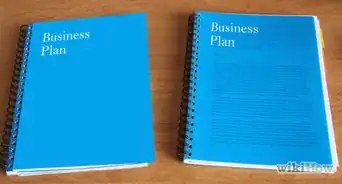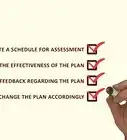This article was co-authored by Keila Hill-Trawick, CPA and by wikiHow staff writer, Jennifer Mueller, JD. Keila Hill-Trawick is a Certified Public Accountant (CPA) and owner at Little Fish Accounting, a CPA firm for small businesses in Washington, District of Columbia. With over 15 years of experience in accounting, Keila specializes in advising freelancers, solopreneurs, and small businesses in reaching their financial goals through tax preparation, financial accounting, bookkeeping, small business tax, financial advisory, and personal tax planning services. Keila spent over a decade in the government and private sector before founding Little Fish Accounting. She holds a BS in Accounting from Georgia State University - J. Mack Robinson College of Business and an MBA from Mercer University - Stetson School of Business and Economics.
There are 7 references cited in this article, which can be found at the bottom of the page.
wikiHow marks an article as reader-approved once it receives enough positive feedback. In this case, 100% of readers who voted found the article helpful, earning it our reader-approved status.
This article has been viewed 135,334 times.
If you need additional investment or a loan from a bank to start your internet business, you've probably been told you need a business plan. But even if you're not planning something that sophisticated, a good business plan is more than just busywork. Writing your business plan requires you to really think about the direction of your business and how you want it to grow. If your business really takes off, your business plan provides you a blueprint to follow so you can keep pace.[1]
Steps
Drafting Your Plan
-
1Create an executive summary that outlines your business. The first page of your business plan is a brief summary of the entire plan. Use this summary to really sell your business, especially if you're looking for investors or bank loans.[2]
- Even though the executive summary is the first part of your plan, you'll typically want to write it last. It's far easier to summarize your business plan once you've got the full draft in front of you.
- Include an executive summary even if you're starting a small business and don't plan on seeking any outside funding for it. Writing it helps you think constructively about your business and where you'd like to see it go.
-
2Provide details about the background and current status of your business. This is the part of your business plan where you tell the story of your business. If you have a compelling story about how you came up with the idea to start your business, or if there's something particularly interesting about the people involved, you might include that information here.[3]
- For example, if you started making hair barrettes for your daughter and her friends and want to start selling them on the internet, you might tell the story of how all the girls in your daughter's school wanted the barrettes.
- Include the nuts and bolts of your business as well, such as how you're organized (if you've incorporated or formed an LLC, for example) and where you're located.
- You might think location isn't important for an internet business, but it impacts the types of funding available for your business as well as the regulations that govern you and the taxes you'll have to pay.
Advertisement -
3Describe the products or services you plan to offer. Use plain language to explain what products or services your internet business will offer to the public. Avoid technical or industry jargon as much as you can and define anything you can't avoid. Include basic information about the market you're entering and who your primary competitors will be.[4]
- For small shops with homemade items, look at similar shops on the internet and think about how your products are different from theirs (besides the fact that you made them).
- In business lingo, this is the section where you identify the problem your target customers have and how your products or services solve that problem. If others are offering similar solutions, describe how yours is better or different.[5]
- If you're researching ways to improve your products or services, provide details about that work and how much money it will cost.[6] For example, if you're making hair barrettes, you might be looking into waterproof materials or elastic that doesn't pull hair.
-
4Discuss how you plan to market your products or services. Your readers know what you have to offer—now, tell them how you plan to sell those products or services to the people who need them. Describe your target customer and explain how you plan to reach them and convince them to buy from you.[7]
- Your target customers are the people you think are going to buy your products or services—they might not necessarily be the people who ultimately use them. For example, if you're selling handmade hair barrettes for little girls, your target customers would likely be their parents, not the little girls themselves.
- For example, if you're planning on buying targeted advertising on social media, you might include examples of the ads you're going to run and the types of people who will see those ads.
-
5Explain the day-to-day operations of your business. In this section, you'll discuss how various tasks will be processed and who will complete them. If you have specific requirements for the location of your business, you'll cover those here.[8]
- If you're running your business out of your home, you might not need any additional requirements for your location. At the same time, if your business expands, you might want to move it out of your home, so take that into consideration.
- Include information about any shipping or delivery services you plan to use and the costs for those services.
- Provide information about deadlines and how you'll get your products or services to your customers in a timely fashion. For example, in a crafts-based business, you might outline how long it takes you to complete a custom order.
-
6Outline your management structure. Give a little background for each of the people who will be in charge of your business, including yourself. Highlight the particular expertise that each member of your management team brings to the table. If you're starting your business on your own, simply describe your own background and skills.[9]
- As long as you're not seeking any outside funding from banks or investors, you don't have to worry too much about having any particular business management experience. Just keep in mind that if you want to scale up at some point, you might want to work with a professional, such as an accountant.
- If you're planning to hire employees or management staff, set parameters for when new people will be added—perhaps when you reach a certain sales volume. Briefly describe your minimum requirements for new people in terms of their skills and qualifications.
-
7List startup expenses necessary to get your business off the ground. Even an internet business has startup costs, including any organizational costs and the money you've already spent to reserve a domain, build your website, and set up advertising accounts.[10] These expenses might include money you've already spent.
- Don't forget capital expenses—things you'll use to operate your business. For example, if you have to buy computers and software to get your business up and running, those would be considered capital expenses. Likewise, if you're going to be selling quilts, your sewing equipment would be a capital expense (even if you've already purchased it).
- If you're planning to launch your business on a specific date, detail the expenses required for the launch.
-
8Create financial projections to demonstrate how your business will succeed. This section is particularly important if you're seeking outside funding from investors or banks. Since you don't have a lot of background financial information for lenders to base their decisions on, they'll look at these projections instead. Use the knowledge you've gained from your research of the market to make realistic projections of how much money your business stands to make once it becomes established.[11]
- If you're not seeking outside funding, financial projections aren't as important for your business plan. At the same time, it might be a fun exercise to predict how your business might grow.
- Charts and graphs in this section help your reader visualize your financial plans. They're also quick to understand simply by glancing at them so investors or banks don't have to read a lot of dense content.
- If you're asking for funding, include a funding request in this section that outlines how much money you're looking to raise and what you'll use the money for.
Creating Appendices
-
1Include appendices primarily if you're seeking outside funding. The documents in the appendices are typically required for investors and lenders. However, if you're just creating your business plan for your own personal use, you don't really need to fuss over these as much.[12]
- If you're creating your business plan for yourself, it can be helpful to include documents that you might need to reference later, so you have them all in one place. For example, if you include bank account and tax ID documents as appendices to your business plan, you'll always know where to find them when you need them.
-
2Organize an appendix for each section of your plan. Structure your appendices so that they follow the same order as your business plan. If you end up not having any documents for a particular section of your plan, you can just take that section out.[13]
- Often, your appendices will be longer than the business plan itself. It's possible that each section of your business plan is only a page or two, while you have 5-10 pages of documents to supplement the section.
- Organizing your appendices by section allows your readers to quickly find the documents they want to look at.
-
3Provide copies of tax, licensing, and other business documents. These documents support the section of your business plan that talks about the background and current status of your business. These documents are typically required by any lender or investor, so it helps to include them as appendices to your business plan.[14]
- You might include logos and branding in this section as well, although you could also put those with your marketing materials. However, you should include documentation of any trademarks you've registered in this section.
- Include documentation for any other intellectual property your business owns or has applied for, such as patents, copyrights, or trademarks.[15]
- If you have a partnership or sole proprietorship, lenders might require personal tax documents or financial information as well.
-
4Print copies of research or analytics that back up your marketing decisions. Your business plan only includes the conclusions you reached as a result of your research, but your readers might want to better understand how you arrived at those conclusions.[16]
- You don't have to include print-outs of all of your marketing research here—just reports that directly impacted your conclusions or were specifically referenced in your business plan.
-
5Add diagrams and schematics related to business operations. These appendices might not be needed for an internet business. However, if you're a product-based business that needs warehouse space, you might include a floor plan that details how much space you need and how that space will be used.[17]
- If you're going to have several employees in an office, you might include a layout of the floor space so your readers understand how your office will be organized.
-
6Attach the résumés of key personnel in your business. These documents help supplement the section of your business plan that discusses your management structure and the key personnel in your business. Résumés are especially helpful if you're introducing new personnel for the first time and your reader isn't likely to be familiar with them or their background.[18]
- Providing a résumé also helps you keep the plan itself short and simple because you don't have to go into so much detail about the person's background—you can simply refer to their résumé in the appendix.
-
7Include copies of any company or product literature. If you already have mock-ups of advertising or brochures you're going to use to sell your products or services, include them here. This helps give your readers a sense of how you're going to reach your target audience.[19]
- Customer service materials you've created are also helpful here and will help your readers understand how you plan to maintain customers and build a relationship with them.
-
8Close your appendices with supplemental financial reports. The financial information in your business plan shows your reader an overview with the basic information they'll need to make a decision on your business. The reports in your appendix get more in-depth, showing how the reports in the plan were generated and what information went into preparing them.[20]
- If you or any of your partners have run successful internet businesses in the past, you might also include financial reports from those businesses to demonstrate your expertise.
Polishing the Finished Product
-
1Proofread for typos and grammatical errors. If you hand over a business plan that's riddled with typos, you can forget about the funding you're asking for. But even if you're just creating your business plan for internal use, it doesn't hurt to have a polished final product.[21]
- It can be helpful to have something else proofread your plan as well. They might catch an error that you would've missed because you know what it's supposed to say.
-
2Read your plan from your target reader's perspective. It helps if you set your plan aside for a day or two so you aren't as familiar with it. Then, try to put yourself in your prospective reader's shoes as you read. Take notes as you read so you can go back and clarify anything that doesn't make sense at first glance.[22]
- If you have friends or family members that are closer in perspective to your target reader, you might have them read it over as well. Their questions or issues can help you revise your plan.
-
3Spend additional time on your executive summary. Your executive summary is the most important part of your business plan if you need to present it to lenders or investors. Many of them will make up their mind based solely on what they read in the summary. Make sure this part of your plan is perfect and really sells your business and how successful it will be.[23]
- Use active language to make your executive summary really pop off the page and get your readers excited about your business. Allow your enthusiasm for your business to shine through.
- You might have friends or colleagues read just the executive summary. Ask them if they would invest in your business based solely on the information there. Then, use their questions and comments to tweak the executive summary further.
-
4Create a cover page and table of contents for your business plan. On the cover page, type the name of your business and contact details, including the business's address, phone number, and email. Most word-processing apps have a function that will create a table of contents for your sections based on the page numbers and section headings you've used—although this template might require some tweaking depending on how you formatted your business plan.[24]
- After you've created the table of contents, flip through the business plan and make sure the page numbers line up correctly. Expect your readers to use the table of contents to quickly access the sections they want to look at.
- If you're delivering your business plan digitally, make the page numbers in the table of contents links so that your readers only have to click the page number to move to that page in the document. Most word processing apps will format this for you—just check the options on the editing menu.
-
5Check for consistent formatting and correct page breaks. Look at the print preview of your final business plan and make sure all of your graphs and charts are formatted so they don't cut off between pages. Make sure any explanatory text is included on the same page as the graph or chart it explains, so your readers won't have to flip back and forth to make sense of the visual.[25]
- If you have to make any changes or add page breaks, go back and check your table of contents to make sure it still lines up correctly.
- Use the same font and page margins throughout your business plan. This is especially important if you worked on it in pieces or farmed some of the sections out to a partner or other business associate.
-
6Print your business plan and put it in a presentation cover. Even if you're delivering your business plan to potential investors or lenders digitally, it's still a good idea to have at least one formal print copy, plus another copy for internal use.[26]
- If you're giving a presentation to potential lenders or investors, create formal print copies for each person who will be in attendance—even if you submitted your plan digitally before the presentation.
- Don't skimp on printing! Using quality paper and a professional printer will help your business plan stand out from the rest. This is especially important if you're presenting the plan to banks or potential investors.
References
- ↑ https://www.sba.gov/business-guide/plan-your-business/write-your-business-plan
- ↑ https://www.michigan.gov/documents/business/Guide_to_Starting_a_Small_Business_271487_7.pdf
- ↑ https://www.startupdonut.co.uk/business-planning/write-a-business-plan/essential-guide-to-writing-a-business-plan
- ↑ https://www.startupdonut.co.uk/business-planning/write-a-business-plan/essential-guide-to-writing-a-business-plan
- ↑ https://www.entrepreneur.com/article/175242
- ↑ https://www.sba.gov/business-guide/plan-your-business/write-your-business-plan
- ↑ https://www.michigan.gov/documents/business/Guide_to_Starting_a_Small_Business_271487_7.pdf
- ↑ https://www.michigan.gov/documents/business/Guide_to_Starting_a_Small_Business_271487_7.pdf
- ↑ https://www.michigan.gov/documents/business/Guide_to_Starting_a_Small_Business_271487_7.pdf
- ↑ Keila Hill-Trawick, CPA. Certified Public Accountant. Expert Interview. 30 July 2020.
- ↑ https://www.sba.gov/business-guide/plan-your-business/write-your-business-plan
- ↑ https://www.michigan.gov/documents/business/Guide_to_Starting_a_Small_Business_271487_7.pdf
- ↑ https://www.michigan.gov/documents/business/Guide_to_Starting_a_Small_Business_271487_7.pdf
- ↑ https://www.michigan.gov/documents/business/Guide_to_Starting_a_Small_Business_271487_7.pdf
- ↑ https://www.score.org/resource/business-plan-template-startup-business
- ↑ https://www.score.org/resource/business-plan-template-startup-business
- ↑ https://www.michigan.gov/documents/business/Guide_to_Starting_a_Small_Business_271487_7.pdf
- ↑ https://www.startupdonut.co.uk/business-planning/write-a-business-plan/essential-guide-to-writing-a-business-plan
- ↑ https://www.startupdonut.co.uk/business-planning/write-a-business-plan/essential-guide-to-writing-a-business-plan
- ↑ https://www.startupdonut.co.uk/business-planning/write-a-business-plan/essential-guide-to-writing-a-business-plan
- ↑ https://www.nfib.com/content/resources/start-a-business/bizhelp-8-things-your-business-plan-may-be-missing-71586/
- ↑ https://www.startupdonut.co.uk/business-planning/write-a-business-plan/essential-guide-to-writing-a-business-plan
- ↑ https://www.startupdonut.co.uk/business-planning/write-a-business-plan/essential-guide-to-writing-a-business-plan
- ↑ https://www.michigan.gov/documents/business/Guide_to_Starting_a_Small_Business_271487_7.pdf
- ↑ https://www.nfib.com/content/resources/start-a-business/bizhelp-8-things-your-business-plan-may-be-missing-71586/
- ↑ https://www.startupdonut.co.uk/business-planning/write-a-business-plan/essential-guide-to-writing-a-business-plan
- ↑ https://www.sba.gov/business-guide/plan-your-business/write-your-business-plan
- ↑ https://www.sba.gov/business-guide/plan-your-business/write-your-business-plan

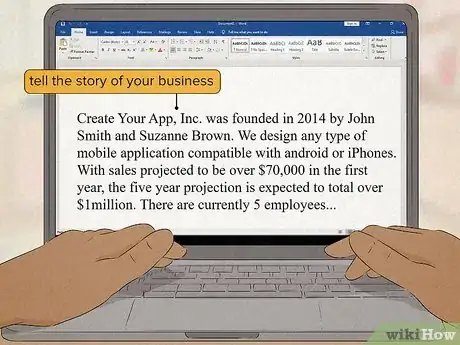
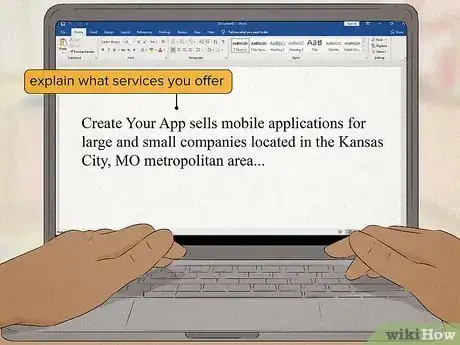
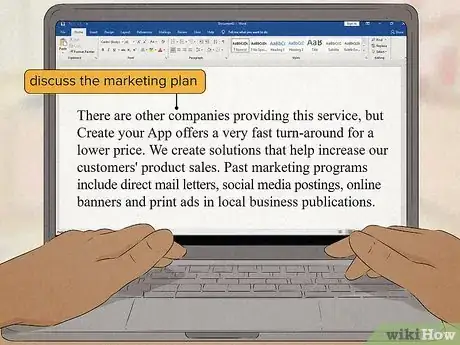
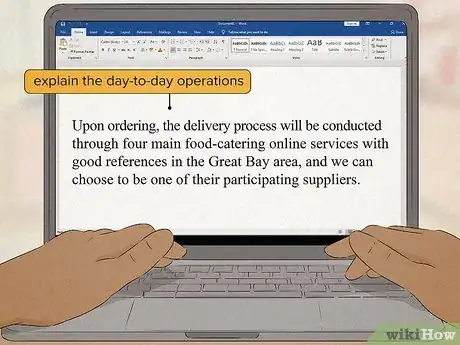
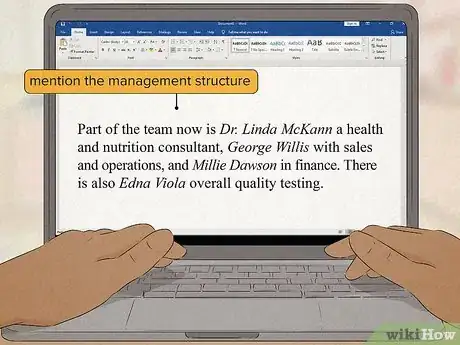
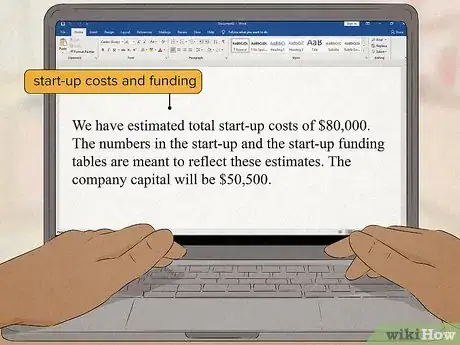




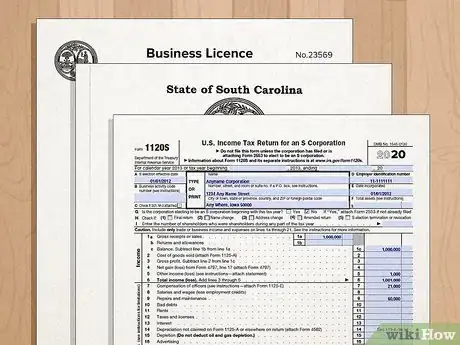
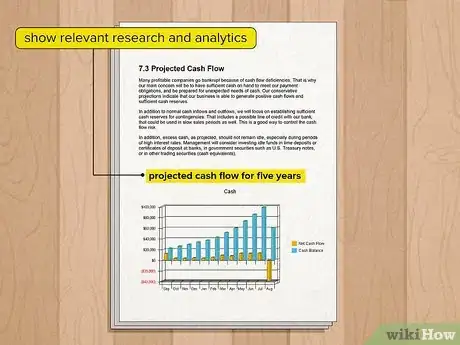
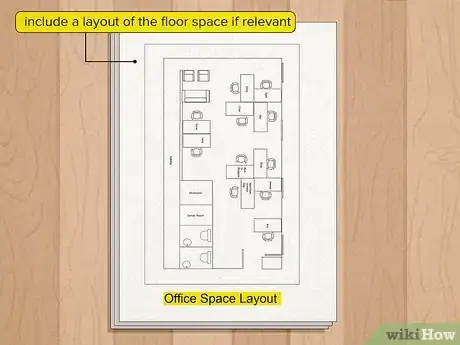
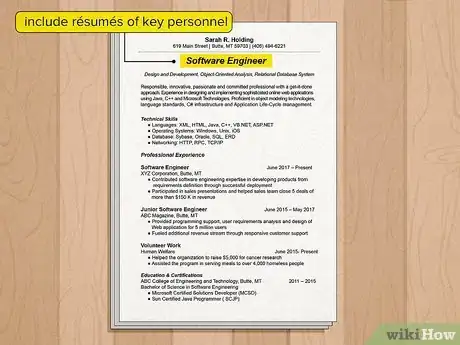
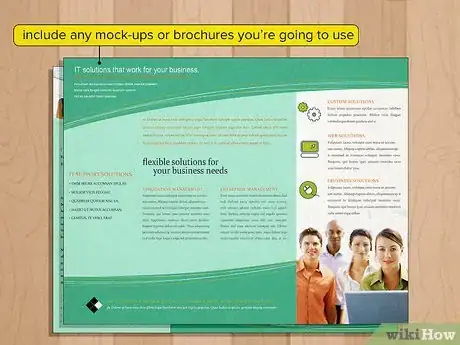
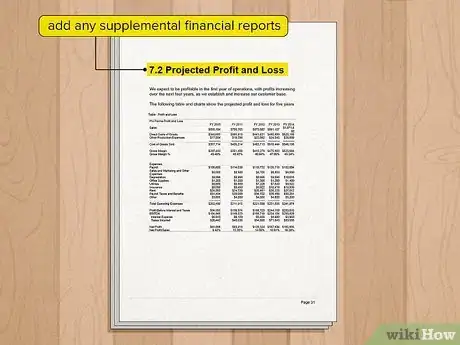
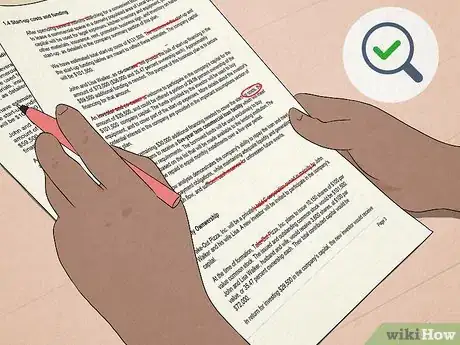


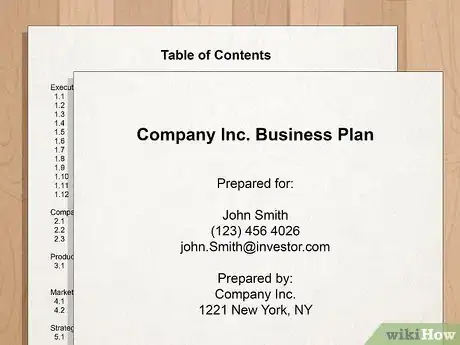
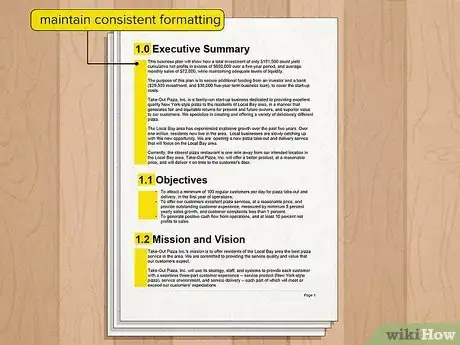
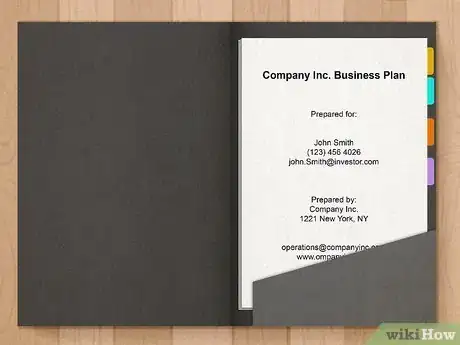


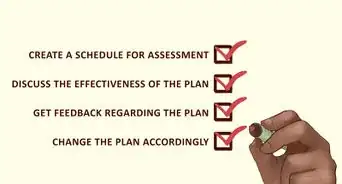

-Step-20-Version-3.webp)


